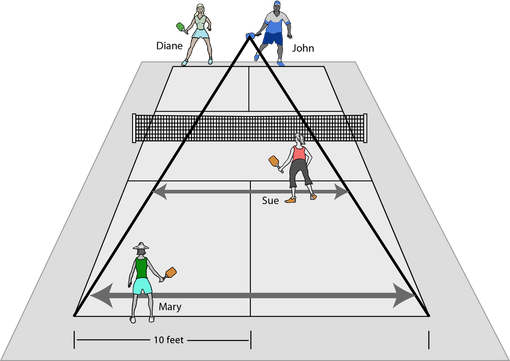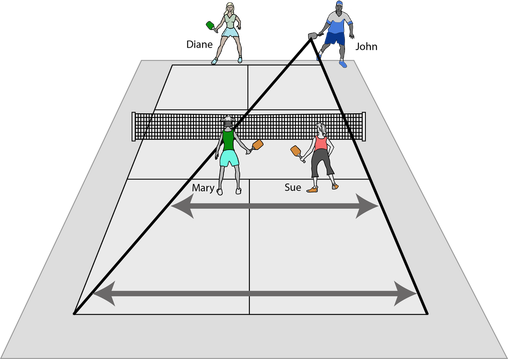| If you don't know why you should move up (other than everyone says so), here's a quick explanation. (The rest of you may skip ahead.) In the picture on the left, the diagonal lines leading from John's paddle to the outer extremes of the backcourt show the maximum possible trajectory of a hard drive John might make. |
What this means is that you shouldn't necessarily stand in the center of your court at the non-volley zone line. Let's concentrate on Sue in the picture above. She's standing where she can reach the drive shots most easily: smack in the center of that 7-1/2 feet. (If Sue were right-handed instead of left and her backhand was weaker, she might move a little to the left.)
Now, what happens if John hits a drop shot — a softer shot that lands just over the net — to Sue and it lands way over on the right inside the NVZ? It's not a problem, because the shot is much slower and Sue will have plenty of time to get to it from her position.
| Now let's say Sue returns the ball to the far outside corner of John's court before he can move up. As shown on the left, the possible trajectory of a drive shot from John has changed. Consequently, both Mary and Sue move to the right, still covering about 7-1/2 feet each. If John returns a soft shot to Mary's left, she'll have time to move and get it. |



 RSS Feed
RSS Feed